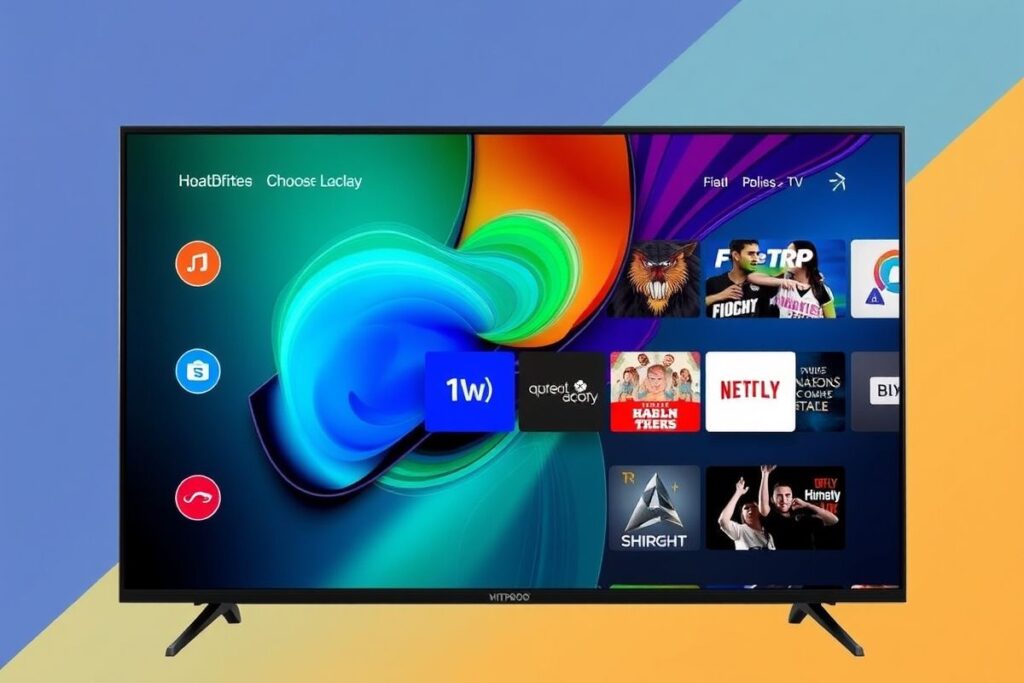Top Features Every Small TV Should Have – 20 Recommendations
Small TVs have become increasingly popular, serving as perfect companions for kitchens, bedrooms, offices, or even RVs. But just because a TV is compact doesn’t mean it should compromise on features. Choosing the right small TV involves carefully considering essential features that elevate your viewing experience from basic to brilliant. This article dives into the top 20 features you should look for when selecting a small TV in 2024, ensuring you get the most bang for your buck without sacrificing precious space.

From stunning picture quality to smart functionality, a well-equipped small TV can pack a powerful punch. This guide will help you navigate the options, focusing on aspects like resolution, connectivity, smart capabilities, and audio performance. We’ll break down technical jargon into understandable terms, empowering you to make an informed decision and find the perfect small screen to suit your needs.
Display Quality and Resolution
Importance of Resolution for Small Screens
Even on a smaller screen, resolution plays a crucial role in picture clarity. Higher resolution translates to sharper images and more visible details, enhancing your viewing experience. While 4K might seem excessive for a small TV, it offers a noticeable improvement over 1080p, particularly if you plan on watching high-definition content.
Consider the viewing distance. If you’re sitting closer to a small TV, a higher resolution becomes even more important. The closer you are, the more noticeable the pixels become, so a higher pixel density offered by 4K can make a significant difference.
Think about the content you typically watch. If you primarily stream movies or play video games, investing in a higher resolution screen will provide a more immersive and enjoyable experience.
HDR and its Impact
High Dynamic Range (HDR) significantly enhances the contrast and color range of the display, resulting in more realistic and vibrant images. Look for HDR support, specifically HDR10 or Dolby Vision, for a noticeable improvement in picture quality.
HDR allows for brighter whites and deeper blacks, revealing details that might otherwise be lost in shadows or highlights. This expanded dynamic range makes images pop and enhances the overall viewing experience.
HDR performance can vary between TVs, so consider looking for reviews and comparisons to ensure you’re getting a TV that effectively utilizes HDR technology.
Panel Technology: LED vs. OLED
LED TVs are generally more affordable and offer good picture quality. OLED TVs, while more expensive, deliver superior black levels and contrast, leading to a more cinematic experience.
OLED’s individual pixel illumination allows for precise control over light and dark areas, creating true blacks and eliminating the backlight bleed often seen in LED TVs.
Consider your budget and viewing priorities. If image quality is paramount, OLED is the clear winner, but LED offers a good balance of performance and price.
Smart Functionality and Connectivity
Built-in Smart Features
A smart TV simplifies streaming by offering built-in access to popular streaming services. Look for a TV with a user-friendly interface and support for your preferred platforms.
Consider the operating system. Different smart TV platforms offer different features and app selections. Research which platforms offer the apps and services you need.
Ensure the TV has a robust processor to handle the demands of streaming and smart functionality without lag or performance issues.
Connectivity Options: HDMI, USB, and More
Multiple HDMI ports are crucial for connecting devices like game consoles, Blu-ray players, and streaming sticks. Ensure the TV has enough ports to accommodate your needs.
USB ports allow you to connect external storage devices for playing media files. Consider the number and type of USB ports available.
Look for other connectivity options like Bluetooth for connecting wireless headphones or speakers, and Wi-Fi for seamless internet access.
Screen Mirroring and Casting
Screen mirroring lets you display content from your smartphone or tablet directly on the TV. This is a convenient way to share photos, videos, or presentations on a larger screen.
Casting functionality allows you to stream content from apps on your phone to the TV. This is useful for sharing videos from YouTube or Netflix without the need for cables.
Check for compatibility with your devices and operating systems before purchasing a TV with screen mirroring or casting capabilities.
Audio Performance and Other Considerations
Sound Quality in Compact TVs
While small TVs often have limited speaker space, look for models that offer decent sound quality. Consider features like Dolby Atmos support for enhanced audio immersion.
Consider connecting external speakers or a soundbar to significantly improve the audio experience, especially for movies or music.
Check for audio output options like optical audio or headphone jacks for connecting external audio devices.
VESA Mounting Compatibility
VESA compatibility allows you to easily mount the TV on a wall or stand, saving space and improving viewing angles.
Check the VESA mounting pattern of the TV and ensure it’s compatible with your desired mount.
Consider the weight of the TV and choose a mount that can safely support it.
Remote Control and User Interface
A user-friendly remote control and intuitive interface make navigating the TV’s features simple and convenient.
Look for a remote with clearly labeled buttons and a comfortable design.
Consider a smart remote with voice control functionality for easy searching and navigation.
| Feature | Description |
|---|---|
| Resolution | Small TVs should prioritize at least 1080p resolution for clear images. |
| HDR | High Dynamic Range enhances color and contrast for a more realistic picture. |
| Smart Features | Built-in streaming apps and a user-friendly interface are essential. |
- Check for multiple HDMI ports for connecting various devices.
- Consider the sound quality and potential need for external speakers.
- Ensure small TVs have VESA mounting compatibility for flexible placement.

Leave a Reply